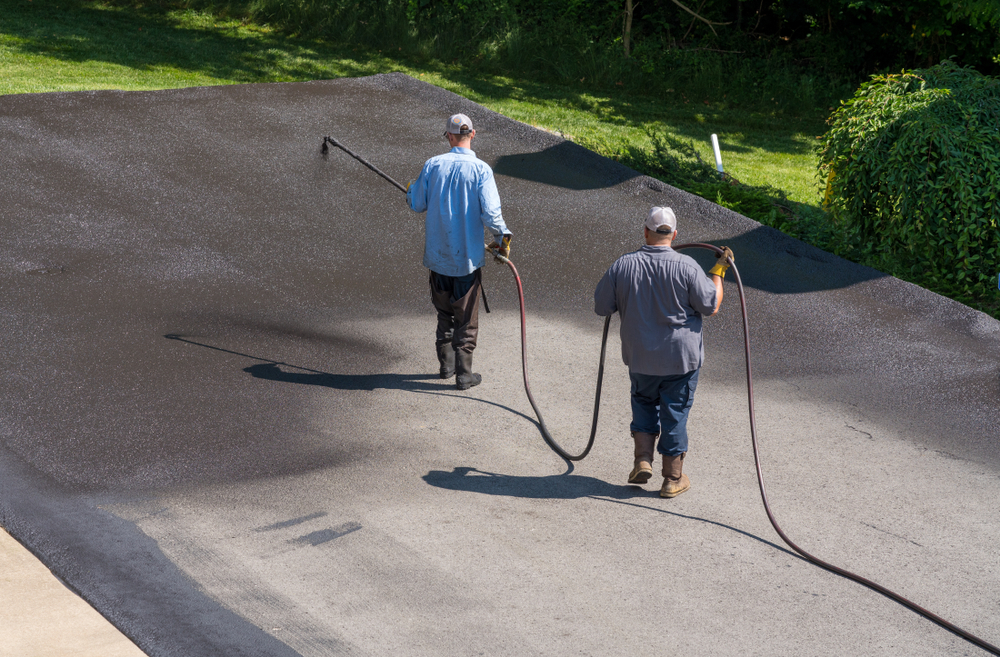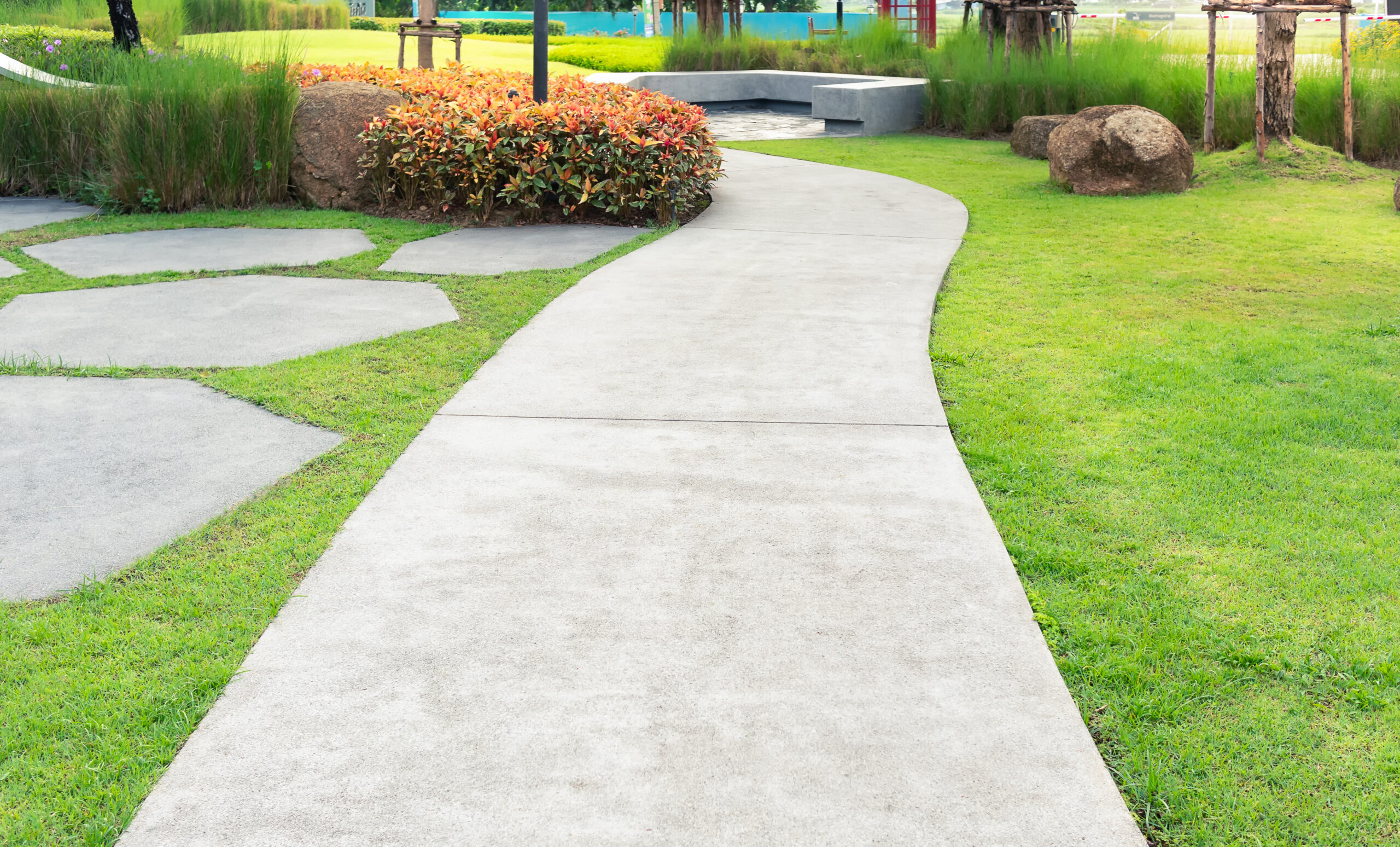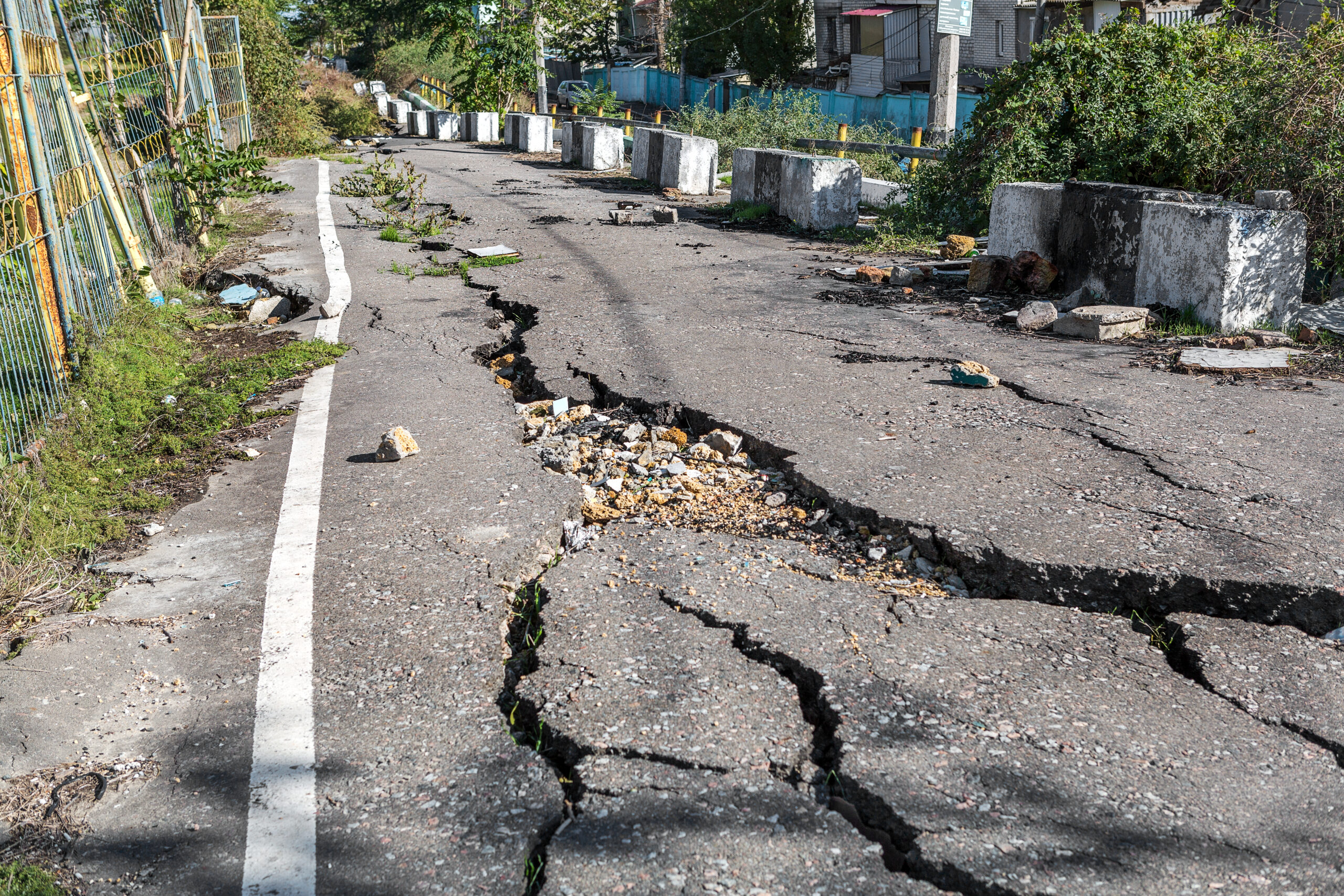
Sealcoating is often seen as a routine maintenance task. But in reality, it plays a much larger role, especially when it comes to parking lot safety and ADA (Americans with Disabilities Act) compliance. Beyond protecting the asphalt from weather and wear, sealcoating helps create a safer, more accessible environment for every person who uses your facility.
Whether you manage a retail lot, office complex, or apartment property, staying ahead of pavement safety issues is essential. From proper striping to smooth, hazard-free surfaces, sealcoating supports both compliance and customer confidence. In this guide, we’ll explore how sealcoating directly contributes to parking lot safety, legal accessibility, and long-term pavement performance.
Enhance Visibility and Traffic Safety
A properly sealcoated lot offers more than a clean look. It actively enhances the way drivers and pedestrians navigate through the space. Faded markings and rough surfaces increase confusion and the risk of accidents. Sealcoating provides the base for clear, durable traffic striping and directional guidance.
How Sealcoating Improves Lot Visibility
Sealcoating darkens the surface of asphalt, creating a rich black background that dramatically improves the contrast of painted lines. This makes arrows, lane dividers, crosswalks, and parking stalls easier to see, especially in low light or rainy conditions.
Benefits to Vehicle and Pedestrian Safety
- Improved driver navigation: Clear lane lines reduce confusion at entrances, exits, and intersections, enhancing overall safety.
- Defined pedestrian walkways: Help separate vehicle traffic from foot traffic.
- Safer turning zones: Striping improves visibility, lowering collision risk in high-traffic areas.
- Nighttime clarity: Reflective paint stands out more against a freshly sealcoated surface.
Without a strong sealcoated layer, markings fade quickly and need to be reapplied more often. By renewing the asphalt surface, sealcoating also helps striping materials adhere better, increasing durability and reducing re-striping costs over time.
Sealcoating and ADA Compliance
ADA compliance isn’t just about meeting guidelines; it’s about creating equal access for everyone. Parking lots are legally required to meet specific accessibility standards, and sealcoating plays a supporting role by ensuring those features are marked, smooth, and safe to use.
The Connection Between Sealcoating and Compliance
To meet ADA standards, parking lots must provide:
- Accessible parking stalls with clear striping
- Properly sized access aisles adjacent to those stalls
- Smooth, slip-resistant surfaces free of trip hazards
- Correct signage and pavement markings for visibility
Sealcoating supports these requirements by restoring the surface layer and improving the visibility and adherence of ADA markings. Without a sealed surface, paint can flake or fade, making it difficult for users to identify accessible spaces.
Standard ADA Features: Sealcoating Supports
- Van-accessible parking stalls
- Access aisles with striping
- Crosswalk visibility
- Wheelchair-accessible loading zones
Freshly sealcoated lots help maintain legal compliance and prevent issues that could result in fines or accessibility complaints. Most importantly, they help ensure your facility remains welcoming and inclusive for all visitors.
Extend Pavement Life and Prevent Hazards
Every crack or pothole in your parking lot is more than an eyesore; it’s a potential liability. Sealcoating slows down the wear-and-tear process, shielding asphalt from damage caused by UV rays, water, oil leaks, and temperature swings.
How Sealcoating Prevents Common Hazards
- Blocks UV rays: Prevents oxidation and surface brittleness.
- Seals out moisture: Reduces the risk of cracks from water infiltration and freeze-thaw cycles.
- Protects against spills: Shields the surface from automotive oils and chemicals.
- Smooths minor imperfections, creating a more even surface that reduces tripping hazards.
By sealing the surface regularly, usually every 2 to 3 years, you help delay primary repair needs and reduce the chance of accidents caused by surface irregularities.
Long-Term Cost and Safety Benefits
Investing in sealcoating protects your budget and your patrons:
- Reduces liability: Fewer hazards mean fewer chances for injury claims.
- Lowers repair frequency: Prevents cracks from expanding and becoming potholes.
- Improves traction: Helps shoes and tires grip better, especially in wet weather.
- Prevents erosion: Sealed surfaces are less prone to crumbling over time.
When property managers overlook sealcoating, problems compound quickly. A neglected surface degrades faster, and necessary repairs become larger, more expensive, and more disruptive to operations.
Support Clear Signage and Layout
A well-sealed and marked parking lot feels organised, safe, and easy to use. Without consistent surface maintenance, striping fades, signage becomes less visible, and the overall layout can cause confusion or delays.
Sealcoating Improves Paint Adhesion
Paint adheres much better to sealed asphalt than to worn, oxidised surfaces. When your lot is sealcoated, it creates a clean, uniform canvas for striping, arrows, fire lanes, and loading zones.
This makes a significant difference in how easily people can navigate your space, especially:
- First-time visitors unfamiliar with the layout
- Delivery drivers or service trucks
- Emergency vehicles are looking for clear access paths
Features That Rely on Sealcoating
- No-parking zones and fire lanes
- Directional arrows and traffic flow indicators
- Curb painting and loading zones
- Crosswalks and pedestrian routes
Poor layout visibility can delay emergency access, confuse drivers, and discourage customers. Sealcoating ensures that a solid, consistent background supports every directional cue and that your site stays easy to navigate throughout its lifespan.
Best Practices for Safe Sealcoating
Sealcoating can be done without shutting down your business if you plan the work carefully. A safe and successful project depends on timing, preparation, and a contractor who understands your access needs.
Key Safety Steps During Sealcoating
- Work in phases: Divide the lot so one part remains open while another is sealed.
- Use proper signage: Mark work zones and open pathways.
- Post warnings: Alert employees and visitors in advance.
- Check the weather: Schedule during dry conditions to avoid delays.
- Allow full cure time: Don’t rush reopening sections before the sealant has fully set.
Work with the Right Contractor
A professional sealcoating team knows how to manage active lots. They help plan traffic flow, minimise disruption, and ensure your ADA markings meet all federal and state regulations.
- Experience with commercial and ADA-sensitive sites
- Weekend or evening availability
- Striping accuracy and material quality
- Insurance and safety practices
Sealcoating is most effective when done with care and coordination. Choose a contractor who can deliver both performance and professionalism.
Frequently Asked Questions
How does sealcoating improve parking lot safety?
Sealcoating smooths the surface, reducing trip hazards for pedestrians and preventing vehicle damage from cracks or potholes. It also enhances surface traction, lowering the risk of slips or skids during wet weather. This creates a safer environment for both drivers and foot traffic.
What impact does sealcoating have on visibility and traffic flow?
A fresh sealcoat darkens the asphalt, increasing contrast for painted lines and markings. This makes traffic arrows, parking stalls, crosswalks, and accessible spaces more visible, improving organisation and helping vehicles and pedestrians move safely through the lot.
How does sealcoating contribute to ADA compliance?
Sealcoating provides a clean, dark surface that supports durable, high-contrast striping for accessible parking and access aisles. This ensures ADA-required markings remain visible and legible, helping maintain compliance and promoting accessibility for all users.
Does sealcoating help prevent long-term maintenance issues that affect safety and compliance?
Yes. It acts as a barrier against moisture, UV damage, and chemical spills, all of which accelerate pavement deterioration. By preserving the asphalt, sealcoating helps avoid costly repairs and supports consistent safety and ADA compliance over time.
What are the legal and reputational benefits of regular sealcoating and ADA-compliant striping?
Regular sealcoating and clear ADA striping reduce the risk of fines, lawsuits, and liability claims related to unsafe or inaccessible conditions. It also shows your commitment to safety and compliance, leaving a strong impression on visitors and enhancing your property’s reputation.
Protect, Comply, and Preserve
Sealcoating does far more than preserve your asphalt; it plays a critical role in parking lot safety and ADA compliance. Improving visibility, preventing hazards, supporting accurate striping, and extending pavement life help you protect both your property and the people who use it.
Asphalt Coatings Company brings over 35 years of experience in delivering safe, code-compliant, and long-lasting pavement solutions. We work with you to plan repairs around your schedule and deliver results that meet the highest industry standards.
Contact us today to schedule your sealcoating evaluation and keep your lot safe, clear, and ADA-compliant.




